5,100 kids shot, 1,300 killed: Gun violence affecting children erupts during COVID-19
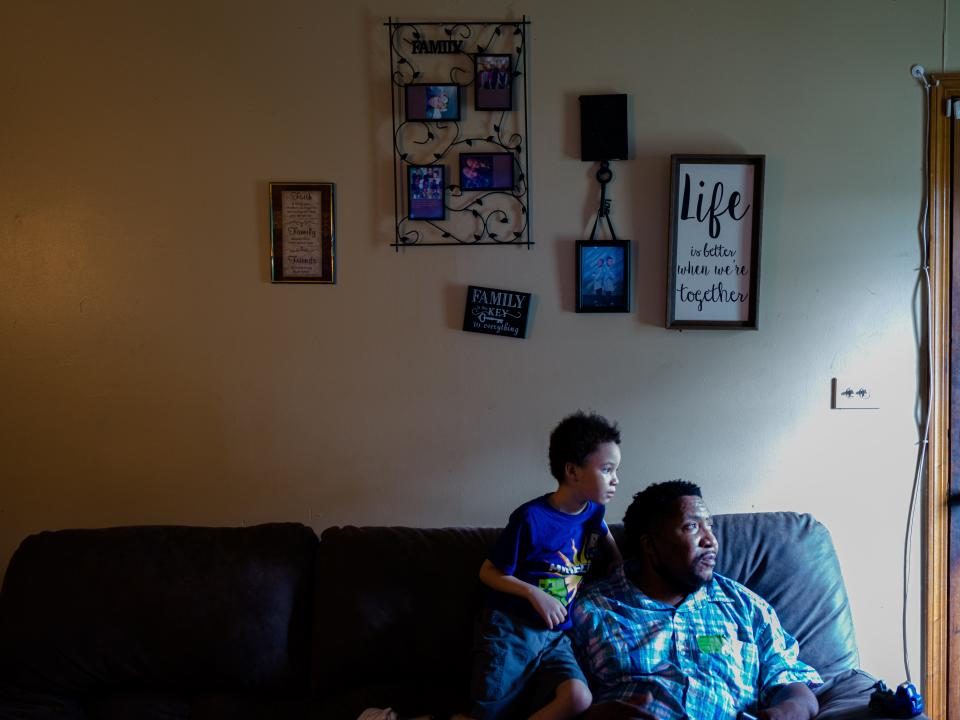
CHICAGO – Clareon Williams, 5, sat on the couch with his dad, playing on his iPad when a spray of bullets ripped through the window of the first-floor apartment, one lodging in his skull.
"The instant I hear the bullet, I grab my son and duck him down, but it was too late," said Clarence Williams, 40. "It brought me to tears seeing them put my 5-year-old boy in an ambulance in his Captain America uniform."
Clareon survived three surgeries and was in a coma for three months. When he woke up, he didn't remember his mother. Ten months after the shooting, Clareon is learning how to walk, talk and eat again. His father takes him to hours of physical therapy twice a week. He has a cast on his leg, a tube in his stomach and a shunt in his head.
"We call Clareon our miracle child," said Williams, who lives with relatives outside Chicago in Markham, Illinois. "This happens to a whole bunch of kids. And some kids are not making it."
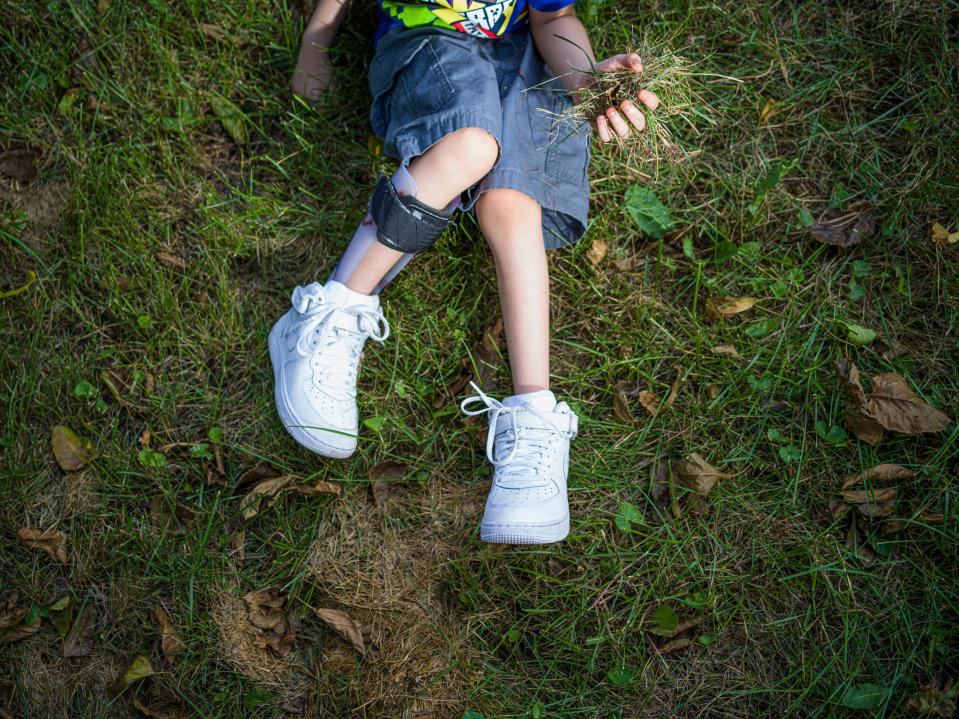
Children and teens in the USA are 15 times more likely to die from gunfire than their peers in 31 other high-income countries combined, according to the Children’s Defense Fund.
Amid the COVID-19 pandemic, the situation has grown more dire.
Last year was the deadliest year for gun violence in the USA in at least two decades, according to the Gun Violence Archive, a nonprofit data collection and research group that uses a combination of police statistics and media reports.
In 2020, more than 5,100 kids under 18 were shot – about 1,000 more than at any point since at least 2014, when the archive launched – and more than 1,300 died. The numbers of kids shot and killed both increased by more than a third from the previous year.
The youngest kids saw the greatest rise in fatalities. Nearly 300 children ages 11 and younger were killed in 2020, about a 50% increase from the year before.
This year looks even worse. As of early September, firearm fatalities were up 13%, and more children and teens had been shot than at the same time last year, according to the archive.
.oembed-frame {width:100%;height:100%;margin:0;border:0;}
Public health professionals, violence interrupters and researchers said the rise is due to a confluence of factors exacerbated by the pandemic, resulting in higher rates of unintentional shootings, suicides and homicides with children caught in the crossfire.
Communities in some of the areas most affected by gun violence are grappling with the trauma of the surge and calling for investments in their youth to stem the cycle of violence.
"It’s time for a change," Williams said. "Something’s gotta give."
'Our future is dying off': Gun violence is killing more Louisville kids than ever
'I can't believe the numbers': Mass shootings, homicide rates, gun sales hit highest levels since 1990s
‘The most dangerous symptom’
A person under 18 was shot in more than 1,000 U.S. cities and counties in 2020, according to a USA TODAY analysis of Gun Violence Archive data. More than half of the nation's 50 most populous cities saw a double-digit percentage rise in the number of kids shot from 2019 to 2020.
Among the cities that have seen the worst violence and the greatest rise are Chicago, St. Louis and Philadelphia, where, respectively, at least 50, 30 and 25 kids under 18 died by gun violence last year, according to the archive's data.
As for the number of children injured: 250 in Chicago, 130 in Philadelphia and nearly 90 in St. Louis – dozens more than each city reported the year before, according to the archive's data.
"You already kind of had folks living on the edge, and this whole (pandemic), even for the average person, was a lot to endure. This is still a lot to endure," said Asiaha Butler, a Chicago peace activist and president of the Resident Association of Greater Englewood, a grassroots community organization.
Butler was on her porch in July when she heard dozens of shots down the street, thinking it was fireworks. Seven people were injured, including a 1-month-old girl who was shot in the head.
"If there were conflicts before, those conflicts have been amplified. If there were guns before, access to those guns has been amplified," Butler said.
In St. Louis, the Rev. Darryl Gray, a community activist, said he's conducted "memorial service after memorial service" this year. He recently buried a 9-year-old boy who lived nearby. The gunmen were aiming at the father and shot the son, he said.
"It was our thought that, when COVID hit, that what it would do is keep families inside, that it would bring our numbers down," he said. "But we haven’t seen that at all."
As hospitals in St. Louis filled with COVID-19 patients last year, all other complaints dropped across the board – except for gun injuries, said Dr. Kristen Mueller, who works in emergency medicine at St. Louis Children's Hospital and Barnes Jewish Hospital.
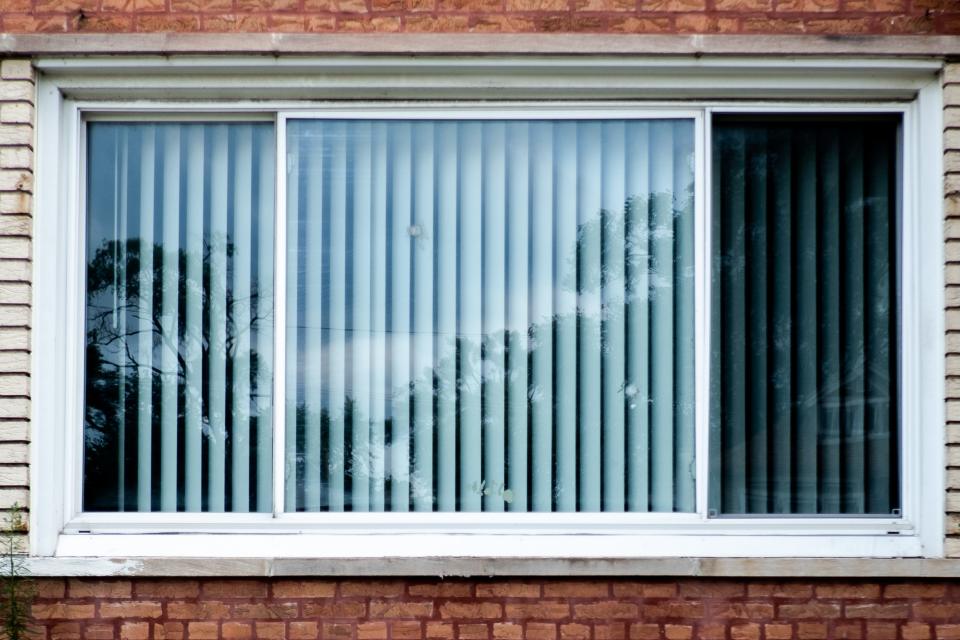
"That has been the dueling epidemic this entire year. And we’re certainly on pace in 2021 to exceed the gun violence deaths from 2020," Mueller said.
In Philadelphia, Dr. Dorothy Novick said the number of people with gunshot wounds at the Children’s Hospital of Philadelphia has "increased so dramatically since the pandemic began."
Stakeholders attributed the spike to an array of stressors exacerbated by the pandemic, such as financial insecurity and joblessness, illness, homelessness and disruptions in social services. Many pointed to rising rates of domestic violence and mental health crises and the closure of schools, child care centers and other safe spaces for youth.
Novick said she suspects the rise nationally is partly due to higher rates of teen suicides and unintentional shootings among children. But homicides have "really gone up the most dramatically," Novick said.
Emergency room visits for suspected suicide attempts among adolescents rose over the past year, according to data from the Centers for Disease Control and Prevention.

Unintentional shooting deaths by children – largely when kids gain access to unsecured, loaded guns at home – were 31% higher from March through December 2020 than during the same period in 2019, according to a report from the nonprofit Everytown for Gun Safety.
Some researchers attributed the rise to nearly 40 million guns legally sold last year. A study in the journal Pediatrics found an increase in firearm injuries of children 12 and younger and injuries inflicted by them correlated with the rise in firearm purchases.
Many majority Black, Hispanic and low-income neighborhoods have borne the brunt of the pandemic's fallout and seen the largest rise in gun violence.
Philadelphia’s neighborhoods most affected by the rising gun violence already faced barriers to quality education, social connectivity, economic mobility and access to health care, said Erica Atwood, senior director for the city's Office of Policy and Strategic Initiatives for Criminal Justice and Public Safety.
"Gun violence isn't the core problem. It is the most dangerous symptom of core problems and core divestments in Black and brown neighborhoods across the country," Atwood said.
'Double trauma': Back to in-person learning, students confront school shootings once again
'An unbelievable chain of oppression': America's history of racism was a preexisting condition for COVID-19
‘The real root of the problem’
Over the past year, Ja'Mal Green, a Chicago activist and father of three, put up posters offering rewards for information about the killings of children – one as young as 21 months.
Green attempted to draw attention to the issue last month through a hunger strike at the site of a closed elementary school. Green said he sat on the roof of the building for about 10 hours – watching children playing in a park below with no swings or basketball net – before police officers brought him down.
"We’re in a state of emergency, and the only thing we hear leadership talk about is the criminal justice system, guns and gangs. They never seem to talk about the real root of the problem, which is investment in youth," Green said.
This year, President Joe Biden unveiled his strategy to combat gun violence with a "zero tolerance policy" for rogue gun dealers and the creation of five gun trafficking "strike forces" to target the illegal flow of firearms across states.
Biden announced a partnership with 15 cities – including Chicago, Philadelphia and St. Louis – to expand community violence intervention programs with federal and philanthropic dollars. Other parts of his strategy include Labor Department programs to expand summer employment for youth and help formerly imprisoned people enter the workforce.
St. Louis launched a series of violence intervention programs, and Gray, the reverend, said he received a $400,000 grant from the state to run a pilot program of safe spaces for 6,000 youth.
"If we’re going to address the murder rate of our children, it has to be all hands on deck," Gray said. "It’s got to be a holistic approach. We have to provide safe havens so that when our children leave their houses, there’s a place they can go."
In Philadelphia, Adam Garber, executive director of the anti-gun-violence group CeaseFirePA, said he wants the city to focus on programs that reach kids most at risk of engaging in gun violence.
Expanding programming at rec centers is an important piece of the puzzle, but "are the right kids there and getting the trauma-informed care that they need?" he asked. He hopes increased funding for smaller community-based organizations could better connect such programs to those who would most benefit.

In West Philadelphia, the nonprofit Charles Foundation runs a weekly work program for youths to clean up neighborhoods and distribute food to those in need. Kids are paid $100 a day.
"If they get more jobs for kids like this," said Dantay Holley, 35, who brought his 14-year-old son to a cleanup, "there will be less violence."
Physicians and community organizers spoke of getting kids back in school, expanding access to mental health resources, promoting education about safe storage of firearms and more.
Some youths said tackling gun violence in Black and brown neighborhoods, in particular, starts with addressing root causes, including poverty, homelessness and other effects of structural racism.
"I think that we should start there," said Trinity Taylor, 19, of St. Louis. "Why are these things really happening?"
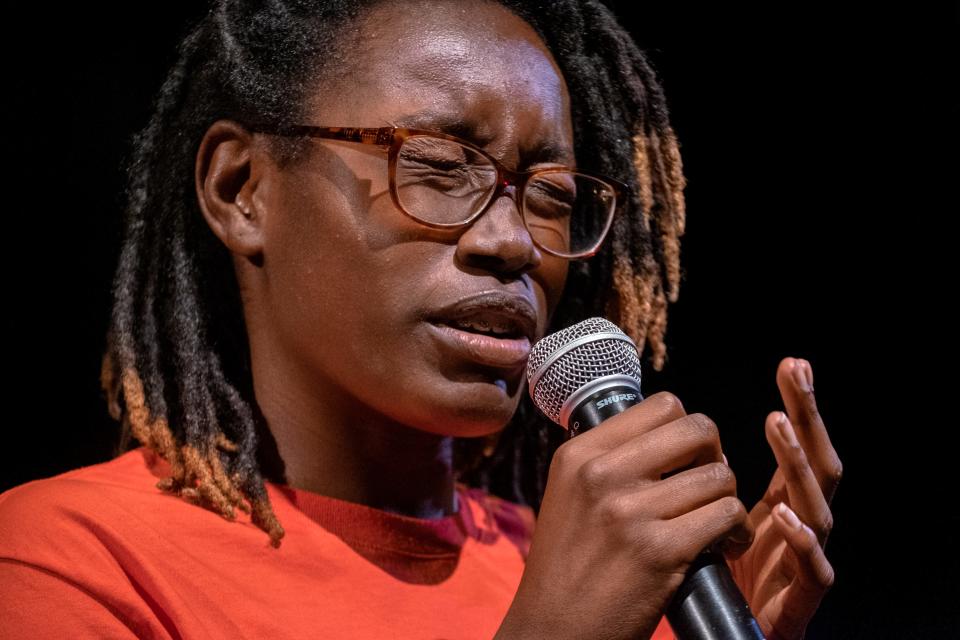
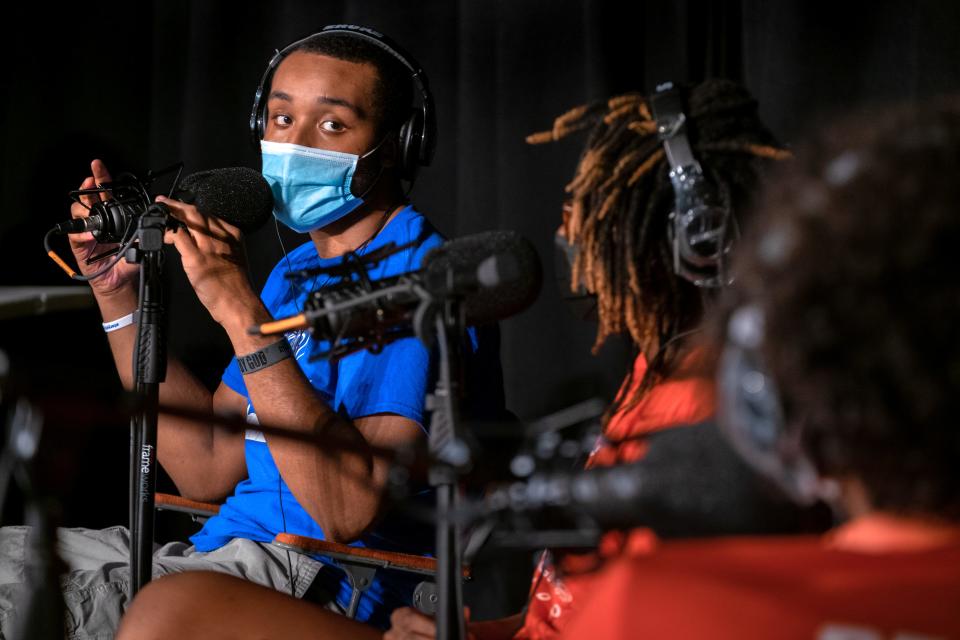
Taylor works for the nonprofit Story Stitchers, which employs young people to tell stories for and about their communities through poetry, dance, rap and more, focusing on gun violence prevention.
"We just provide opportunities that people weren't aware were there," said Branden Lewis, 22, a rapper and youth leader with the group.
Last month, a dozen members recorded a podcast on how COVID-19 has affected their communities and practiced for a showcase. Rachel Jackson, 18, a poet and rapper, rehearsed a poem.
"A gun in the hands of a child, he said I’m trapped, trapped in society’s cage, crying and crying, longing to be heard," Jackson said. "A gun in the hands a child, he said baby girl, I'm trapped. Can you help me out? Voice smooth as butter, I’m singing out."
.oembed-frame {width:100%;height:100%;margin:0;border:0;}
‘We’ve been traumatized from this’
As the gun violence epidemic worsens, advocates and public health officials worry generational trauma will ripple out through families and communities.
For Jaylah Robinson, 17, and her family, the past year brought suffering she could not have imagined: Her sister, Jasmine, 20, was fatally shot.

Last summer, Jasmine and Jaylah had finished playing basketball when Jasmine went out to see some friends. Ten minutes later, Jaylah got the call her sister had been shot, struck by a stray bullet as she was driving with a friend.
The family rushed to the hospital and sat for days with Jasmine before she died.
"That’s the only thing I can always be thankful and grateful for – that we had three days to sit with her," said her brother, James, 25.

Playing basketball has taken on a new meaning for Jaylah since losing her sister. Jasmine had dreams of playing overseas, and she was days away from transferring to play at a college in New York before she was shot.
Jaylah, a standout guard, has gotten multiple Division I recruitment offers.
"It’s just more serious now. ... It's deeper now because you have something to go for or make it for," she said of her playing career after losing Jasmine.
Jasmine's mother, Karen Robinson, wants Jaylah out of Philadelphia, and she's considering leaving her hometown, too.
"I keep my kids with me and doing the right thing. And I lose my child to the city?" she said.
No arrests have been made in Jasmine’s case, and Robinson said she has heard little from police about the investigation.
"A lot of people, kids get murdered, and they just move on," Robinson said. "I'm not, no – we're going keep her name alive. I want justice for her."
Outside Chicago, Clarence Williams said he and his family are trying to heal. They’ve been traumatized by the shooting.
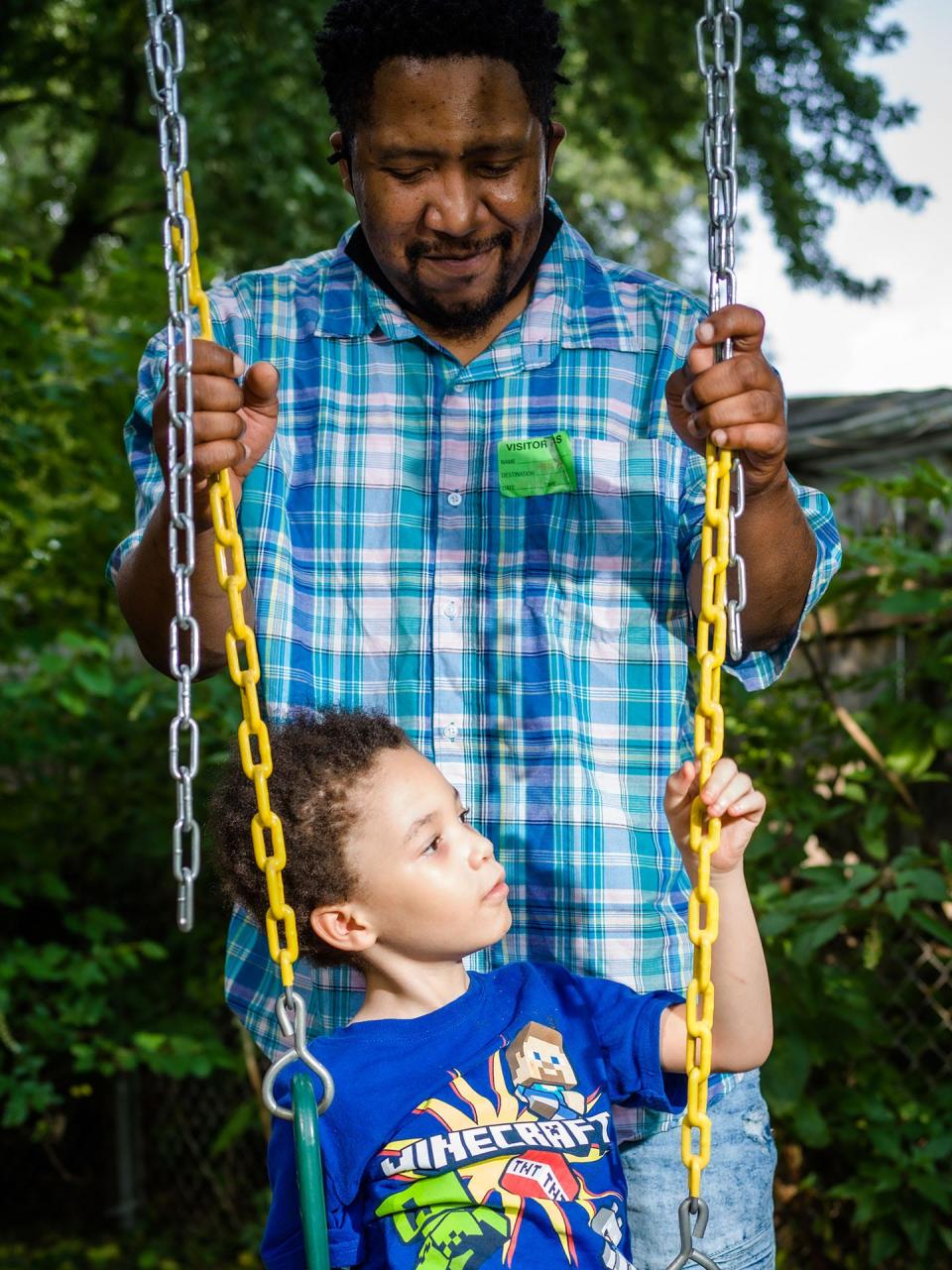
He and his girlfriend never went back to their apartment afterward. They lived in a hotel for three months before moving in with family, and Williams quit his job to focus on Clareon's rehabilitation.
Clareon, now 6, shuffles around his relatives' home and startles at loud noises. His brain is still healing. He was shot on the right side of the head, and his left arm has little feeling or mobility. His parents put together a poster of old family photos to help jog his memory. He's been speaking more, calling out for his Batman toy and McDonald's.
"There were times the doctors said he wasn’t gonna make it. But God has the last word," Williams said. "He’s really trying to get back to himself like a normal child, like he was."
Resources
The nonprofit Everytown for Gun Safety and Brady: United Against Gun Violence maintain lists of resources for people affected by gun violence.
For pandemic-specific mental health resources, head to covidmentalhealthsupport.org.
If you or someone you know may be struggling with suicidal thoughts, you can call the U.S. National Suicide Prevention Lifeline at 800-273-TALK (8255) any time day or night, or chat online. The American Foundation for Suicide Prevention has resources to help if you need to find support for yourself or a loved one.
Crisis Text Line provides free, 24/7, confidential support via text message to people in crisis when they dial 741741.
You can find a list of peer-run hotlines here.
Grace Hauck reported from Chicago and St. Louis. Ryan Miller reported from Philadelphia. Follow them on Twitter at @grace_hauck and @RyanW_Miller.
This article originally appeared on USA TODAY: Gun violence affecting kids soars during COVID-19 pandemic

 Yahoo Movies
Yahoo Movies 